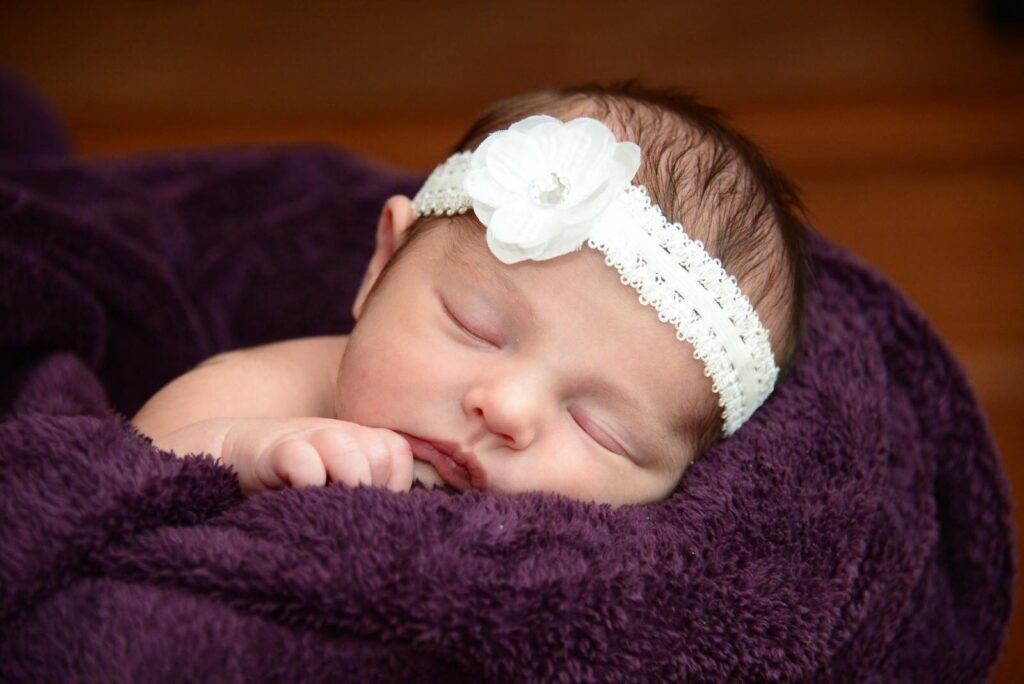
Bringing home a newborn is one of the most exciting and overwhelming times for new parents. As you adjust to life with your baby, sleep becomes one of the biggest concerns. Creating the ideal sleep environment for your newborn is key to helping them get the rest they need for healthy growth and development—and, let’s be honest, it helps you get a bit more sleep too!
In this post, we’ll walk you through the ideal sleep setup for babies 0-3 months, so you can lay the foundation for healthy sleep habits from the start.
1. A Safe Sleep Space: Following the ABCs of Sleep
The most important thing to remember for newborn sleep is safety. The American Academy of Pediatrics (AAP) recommends following the ABCs of safe sleep:
- A: Alone – Your baby should sleep alone in their own sleep space, such as a bassinet or crib. While room-sharing is encouraged during the first six months to reduce the risk of Sudden Infant Death Syndrome (SIDS), co-sleeping in the same bed is not safe.
- B: Back – Always place your baby on their back to sleep. This position reduces the risk of SIDS and is the safest sleep position for infants.
- C: Crib or Bassinet – Use a firm, flat sleep surface like a crib or bassinet. Make sure the mattress fits snugly, and avoid placing any pillows, blankets, stuffed animals, or bumpers in the crib.
Pro Tip: Use a fitted sheet specifically designed for your baby’s mattress, and avoid using loose bedding that could pose a suffocation risk.
2. Room Temperature and Clothing: Keeping Baby Comfortable
Newborns can’t regulate their body temperature as well as older babies, so it’s important to keep their sleep environment at a comfortable temperature—ideally between 68-72°F (20-22°C). Overheating can increase the risk of SIDS, so it’s better to keep the room on the cooler side and dress your baby in light layers.
- Sleepwear: Opt for breathable fabrics like cotton or muslin. Swaddles or sleep sacks are great for newborns, as they help your baby feel snug and secure without the need for loose blankets.
- Check for Overheating: If your baby’s chest or back feels hot or sweaty, they’re likely too warm. Adjust their clothing or the room temperature as needed.
3. White Noise: Creating a Calming Sleep Environment
Newborns are used to the loud, constant noise of the womb, which is why silence can sometimes be unsettling for them. A white noise machine can help recreate the soothing sounds they’re familiar with and block out sudden noises that might wake them. Look for white noise machines that offer continuous sound with no sharp loops or breaks, which could startle your baby.
4. Lighting: Emphasize Day and Night
Newborns don’t have a developed circadian rhythm, but you can start helping them differentiate between day and night by controlling the lighting in their sleep environment.
- Daytime: During daytime naps, allow some natural light into the room and go about your normal daytime activities. This helps your baby understand that daytime is for shorter sleep periods.
- Nighttime: For nighttime sleep, keep the room as dark as possible. Use blackout curtains if needed, and keep any nightlights dim to create a calm, sleep-inducing environment. When you go in for nighttime feedings or diaper changes, keep the lights low to avoid overstimulation.
5. Swaddling: Mimicking the Comfort of the Womb
Swaddling is an excellent way to help your newborn feel safe and secure during sleep, as it mimics the snug feeling of being in the womb. It also prevents the Moro (startle) reflex from waking your baby, which can be a common cause of sleep disruptions.
- Swaddling Tips: Make sure to use a light, breathable swaddle and avoid wrapping your baby too tightly around the hips and legs to allow for proper development. Stop swaddling once your baby shows signs of rolling over (usually between 2-3 months) to prevent safety risks.
6. Feeding and Sleep: Establishing the Right Balance
Newborns wake frequently to feed, and this is completely normal during the first few months of life. However, as your baby grows, it’s important to start separating feeding from sleep to avoid creating strong sleep associations. Here are some tips:
- Full Feedings: Encourage full feedings during the day to reduce unnecessary night wakings. This can help your baby get longer stretches of sleep at night.
- Feed, Then Sleep: As your baby gets closer to 3 months, try to keep them awake during feedings and put them down to sleep while drowsy but still awake. This encourages independent sleep skills from an early age.
7. Start Gentle Sleep Habits Early
While newborns are too young for formal sleep training, you can begin shaping healthy sleep habits from the start:
- Establish a Routine: Create a simple, soothing bedtime routine that might include a bath, diaper change, feeding, and lullaby. Repetition helps signal to your baby that sleep is coming.
- Put Baby Down Drowsy: Whenever possible, put your baby down when they’re drowsy but still awake. This will help them begin to learn how to fall asleep on their own.
Ready to Set Up the Perfect Sleep Environment for Your Baby?
Your baby’s sleep environment plays a huge role in helping them (and you) get the rest they need. By creating a safe, soothing space for sleep, you’ll be laying the groundwork for healthy sleep habits that last a lifetime.
If you’re looking for more guidance on newborn sleep, I’m here to help! As a certified pediatric sleep consultant, I offer an Sleep Shaping ebook for families with babies 0-3 months to help you establish the right sleep foundations from the start. Need help getting your baby on the right sleep track? Purchase your ebook today and get started on shaping your newborns sleep now!



+ view comments